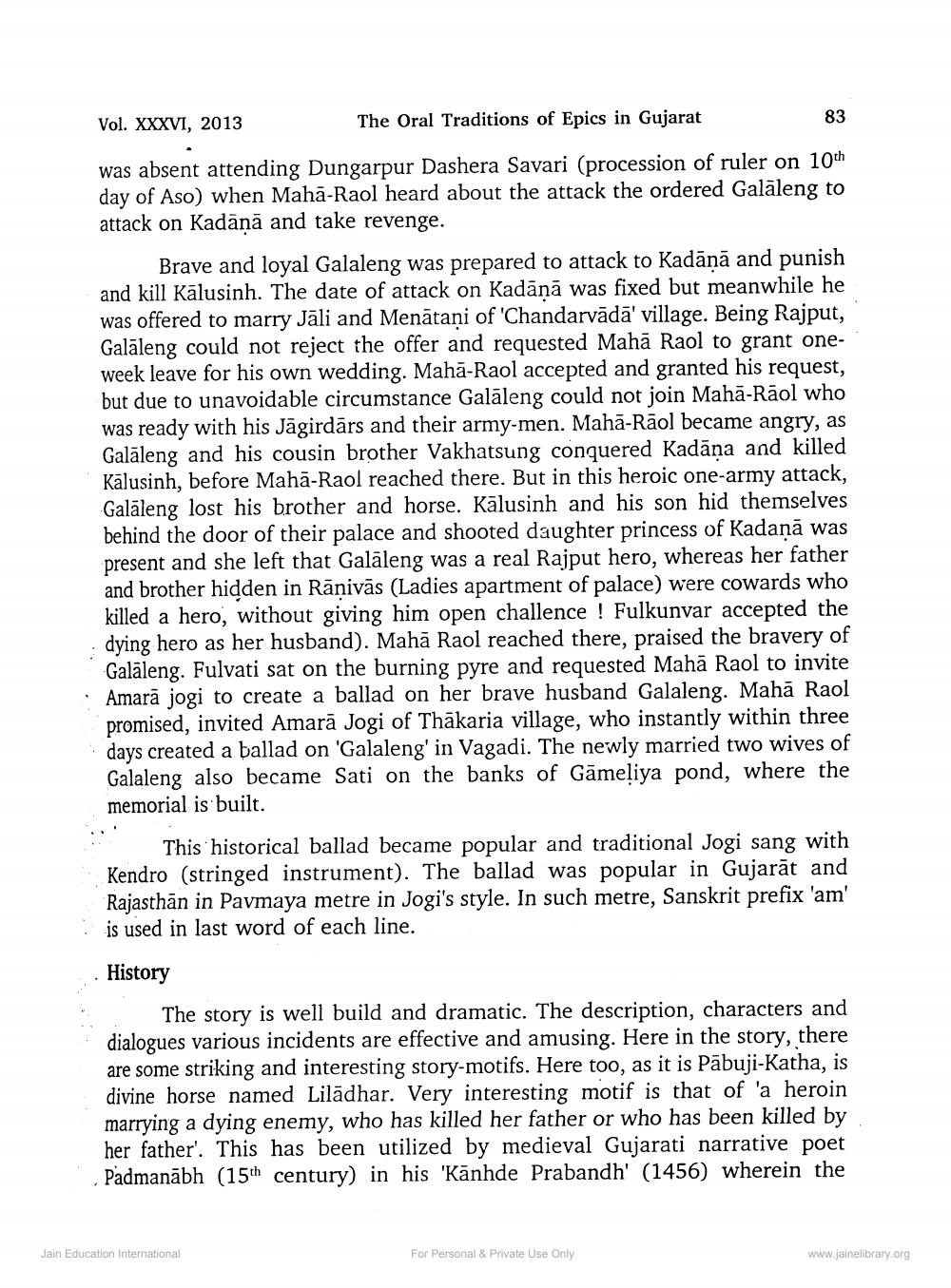________________
Vol. XXXVI, 2013
The Oral Traditions of Epics in Gujarat
83
was absent attending Dungarpur Dashera Savari (procession of ruler on 10th day of Aso) when Mahā-Raol heard about the attack the ordered Galāleng to attack on Kadanā and take revenge.
Brave and loyal Galaleng was prepared to attack to Kadānā and punish and kill Kālusinh. The date of attack on Kadānā was fixed but meanwhile he was offered to marry Jāli and Menātani of 'Chandarvādā' village. Being Rajput, Galāleng could not reject the offer and requested Mahā Raol to grant oneweek leave for his own wedding. Mahā-Raol accepted and granted his request, but due to unavoidable circumstance Galāleng could not join Mahā-Rāol who was ready with his Jāgirdārs and their army-men. Mahā-Rāol became angry, as Galāleng and his cousin brother Vakhatsung conquered Kadāna and killed Kālusinh, before Mahā-Raol reached there. But in this heroic one-army attack, Galāleng lost his brother and horse. Kālusinh and his son hid themselves behind the door of their palace and shooted daughter princess of Kadanā was present and she left that Galāleng was a real Rajput hero, whereas her father and brother hidden in Rāṇivās (Ladies apartment of palace) were cowards who killed a hero, without giving him open challence ! Fulkunvar accepted the dying hero as her husband). Mahā Raol reached there, praised the bravery of Galāleng. Fulvati sat on the burning pyre and requested Mahā Raol to invite Amarā jogi to create a ballad on her brave husband Galaleng. Mahā Raol promised, invited Amarā Jogi of Thākaria village, who instantly within three days created a ballad on 'Galaleng' in Vagadi. The newly married two wives of Galaleng also became Sati on the banks of Gāmeliya pond, where the memorial is built.
:
This historical ballad became popular and traditional Jogi sang with Kendro (stringed instrument). The ballad was popular in Gujarāt and Rajasthān in Pavmaya metre in Jogi's style. In such metre, Sanskrit prefix 'am' is used in last word of each line.
History
The story is well build and dramatic. The description, characters and dialogues various incidents are effective and amusing. Here in the story, there are some striking and interesting story-motifs. Here too, as it is Pābuji-Katha, is divine horse named Lilādhar. Very interesting motif is that of a heroin marrying a dying enemy, who has killed her father or who has been killed by her father'. This has been utilized by medieval Gujarati narrative poet Padmanābh (15th century) in his 'Kānhde Prabandh' (1456) wherein the
Jain Education International
For Personal & Private Use Only
www.jainelibrary.org




